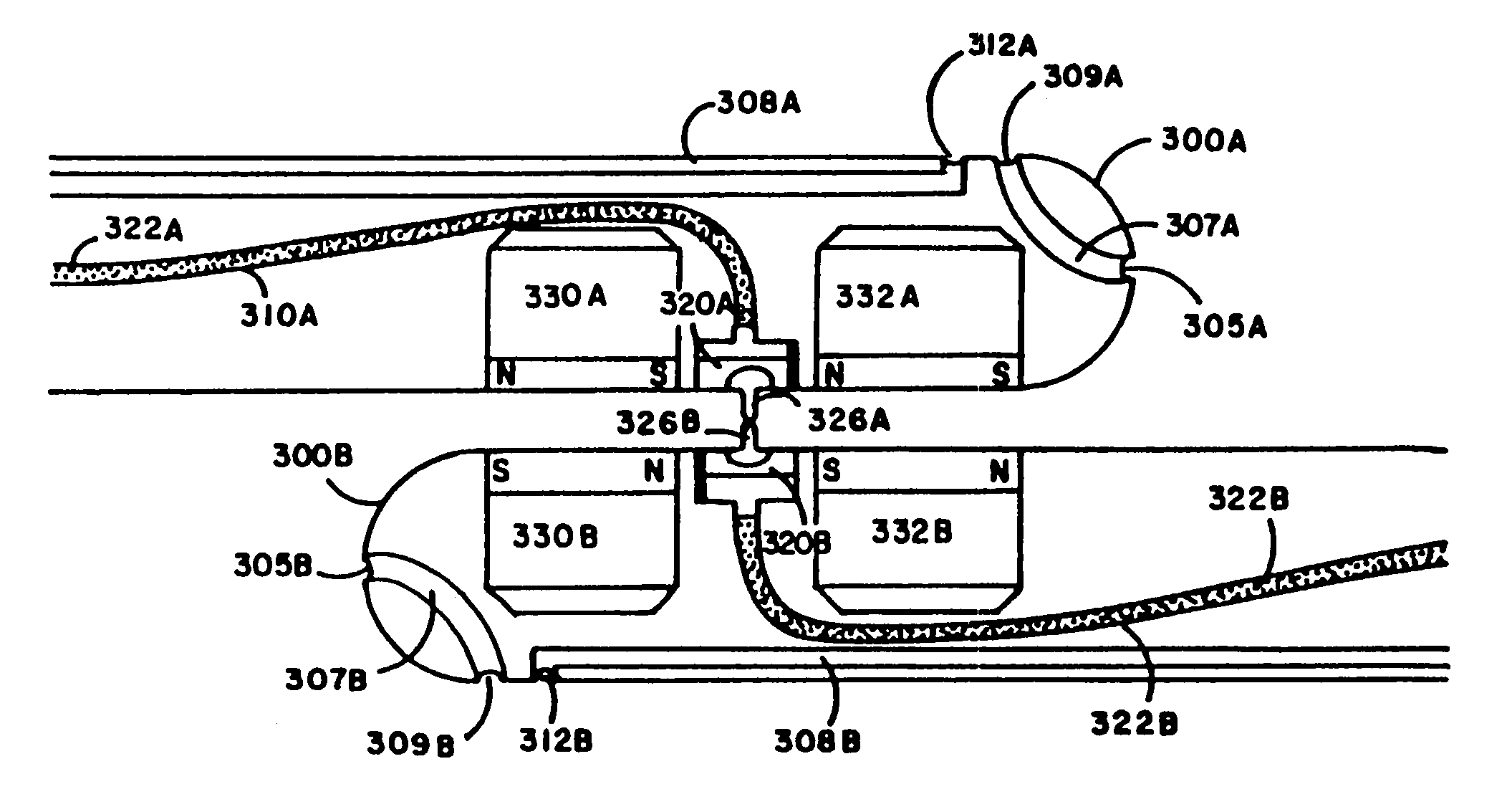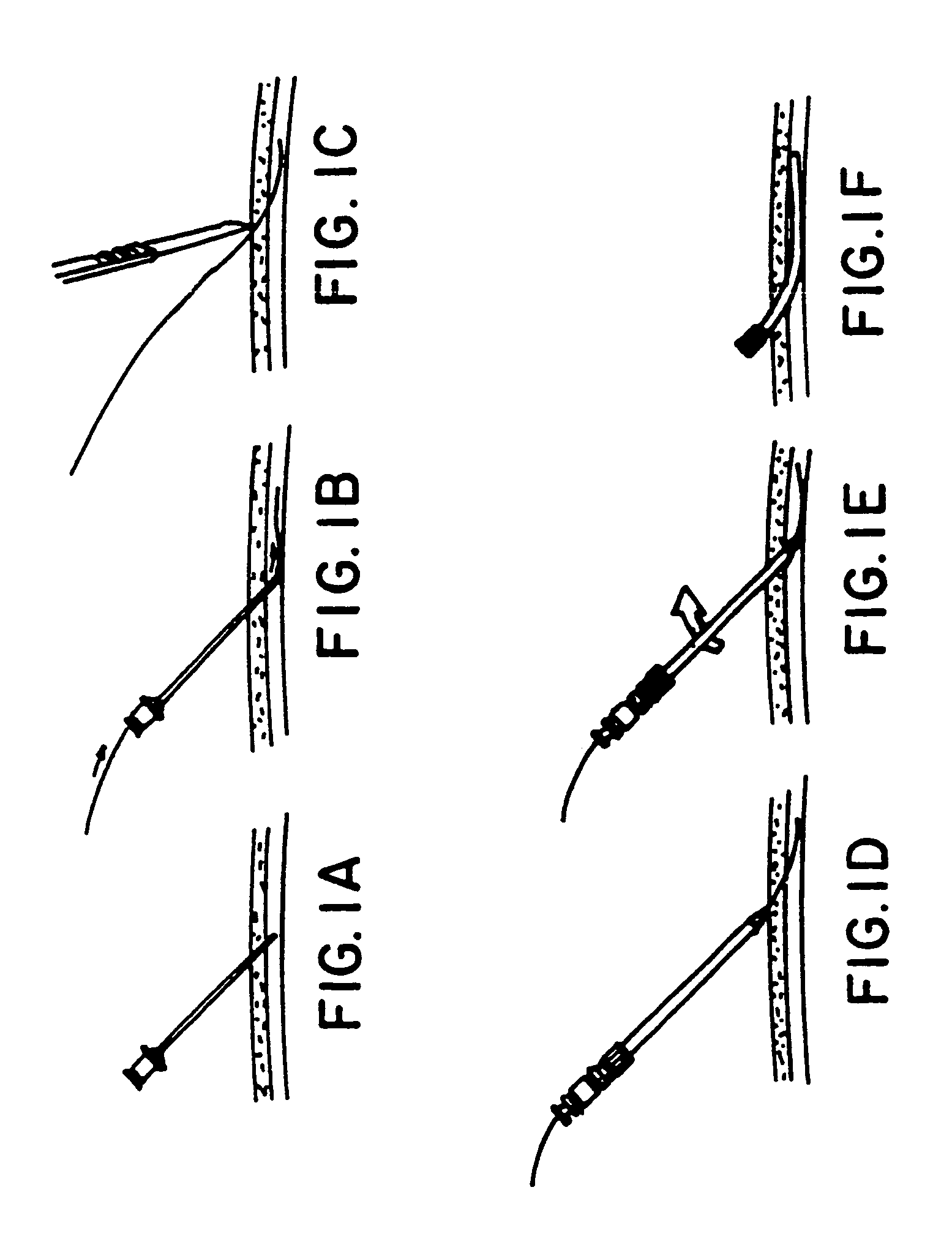Catheter apparatus and methodology for generating a fistula on-demand between closely associated blood vessels at a pre-chosen anatomic site in-vivo
a technology of catheters and fistulas, applied in the field of catheterization apparatuses, can solve the problems of rapid but transient cessation of renal function, gradual deterioration of renal function, and rapid onset of permanent renal failur
- Summary
- Abstract
- Description
- Claims
- Application Information
AI Technical Summary
Benefits of technology
Problems solved by technology
Method used
Image
Examples
Embodiment Construction
[0069]The present invention is a percutaneous arteriovenous fistula catheter (hereinafter “PAVFC”) apparatus and methodology which will generate a fislula between an adjacently located artery and vein or an adjacently located pair of veins in the peripheral vascular system. The arteriovenous (hereinafter “AV”) fistula or venovenous fistula (hereinafter “VV”) is created in a controlled manner between closely associated blood vessels, ideally in the distal extremities (arms or legs) of the patient. However, usage at any anatomic site is possible; and the AV (or VV) fistula can be generated on-demand at a prechosen vascular site under carefully monitored clinical conditions. As such, the present invention provides multiple advantages and unique benefits to both the physician and the patient, some of which include the following.
[0070]1. The present invention is not a surgical procedure as such. To the contrary, the PAVFC apparatus and methodology is a radiological technique which avoids...
PUM
 Login to View More
Login to View More Abstract
Description
Claims
Application Information
 Login to View More
Login to View More - R&D
- Intellectual Property
- Life Sciences
- Materials
- Tech Scout
- Unparalleled Data Quality
- Higher Quality Content
- 60% Fewer Hallucinations
Browse by: Latest US Patents, China's latest patents, Technical Efficacy Thesaurus, Application Domain, Technology Topic, Popular Technical Reports.
© 2025 PatSnap. All rights reserved.Legal|Privacy policy|Modern Slavery Act Transparency Statement|Sitemap|About US| Contact US: help@patsnap.com



